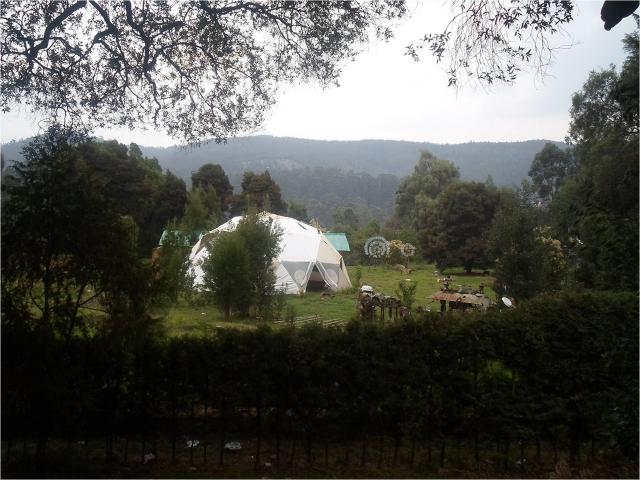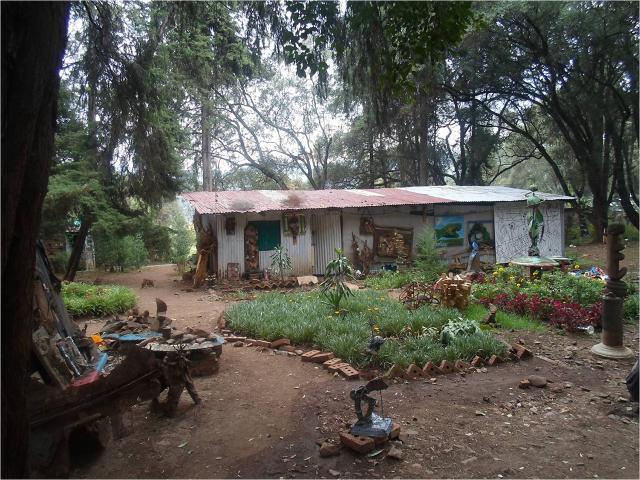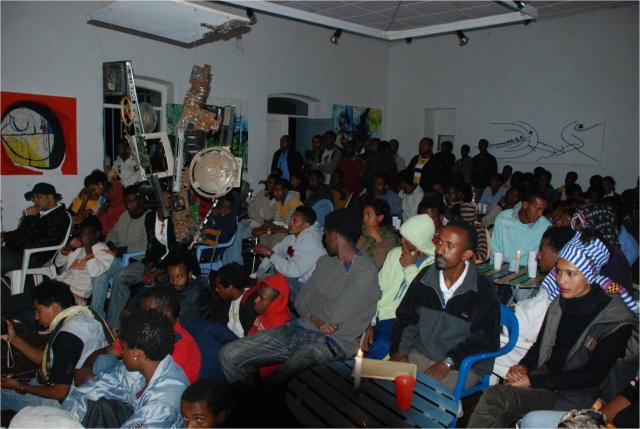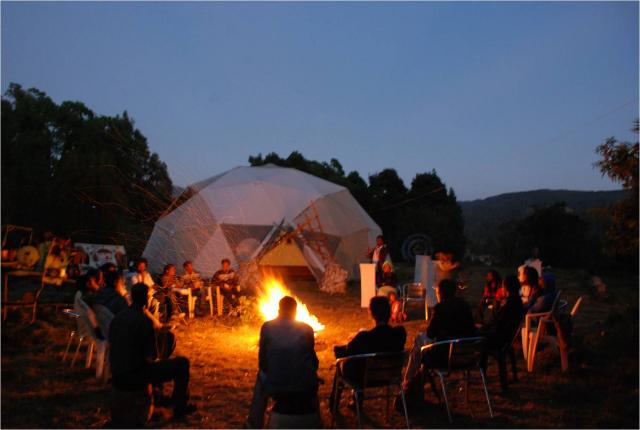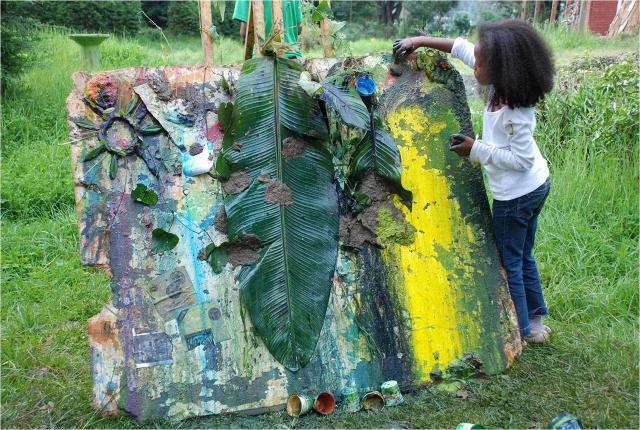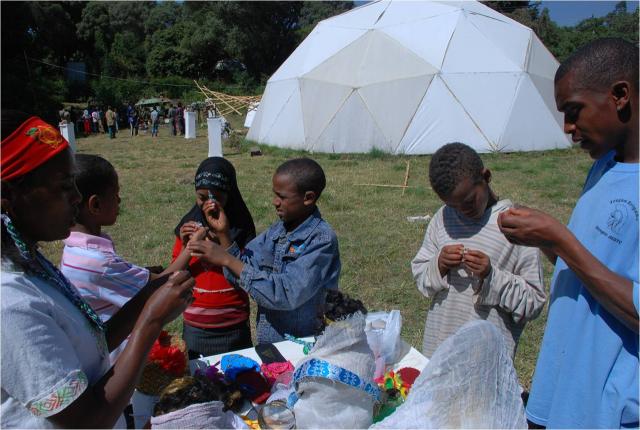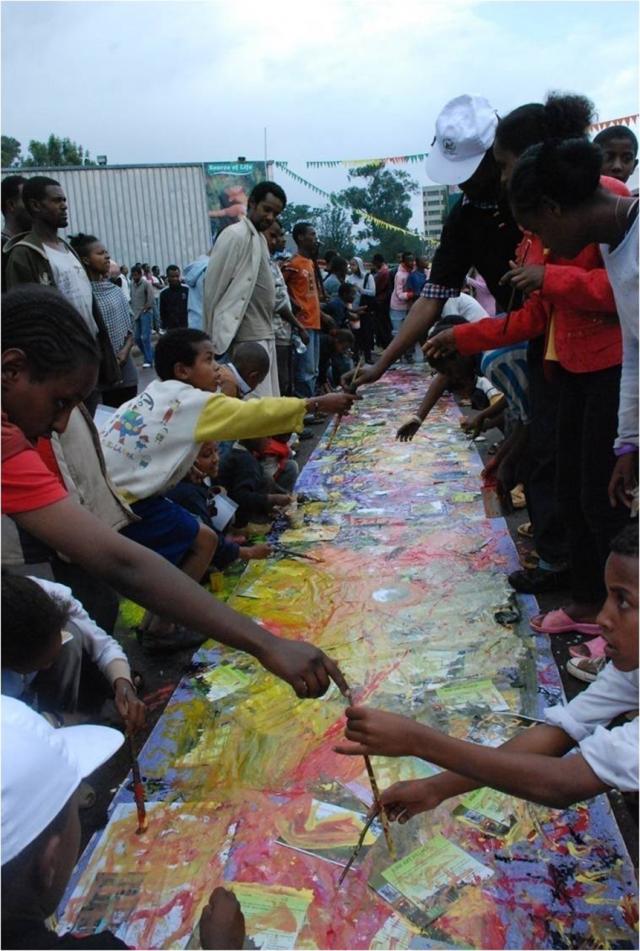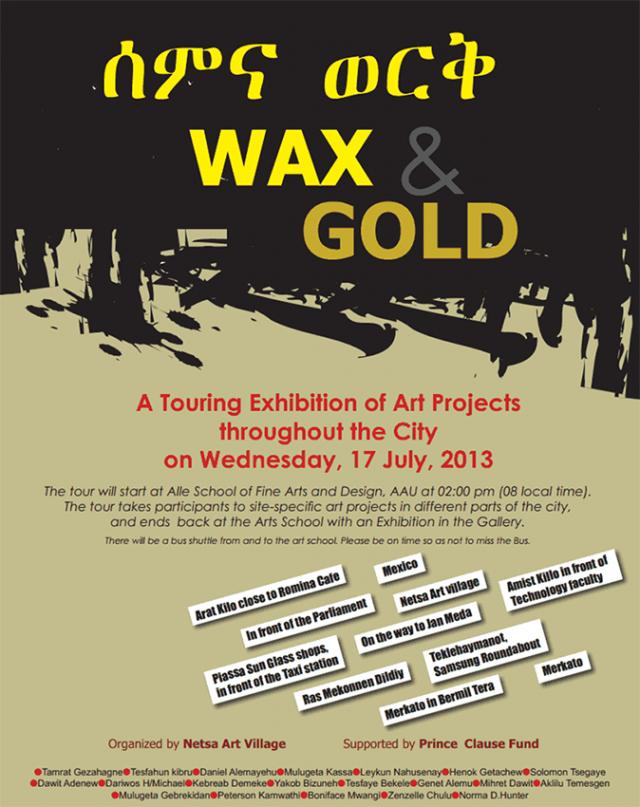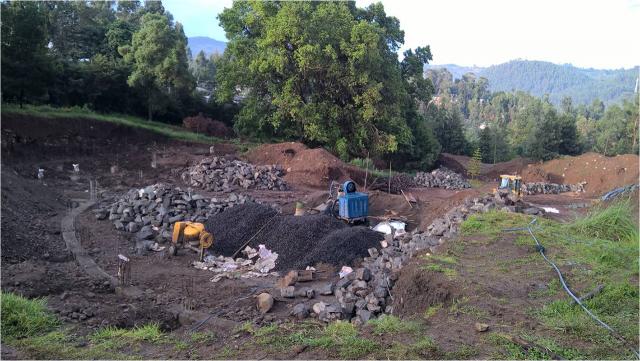Netsa Art Village Legacy: Inhabiting and Creating in Green Urban Spaces
Located in the city of Addis Ababa in Ethiopia, Netsa Art Village was more than an art space and an art project: it was a collective, a studio, a network, a gallery, a garden, a school, an experimental room, and so many other things. Following the term “Netsa” (translated to “free” from Amharic), Netsa Art Village played the role of a hybrid-crossing space between the urban and the rural, the formal and the unregulated, the conventional and the experimental. It surely set a precedent as a space for the mass population to consume art, and put into question the elitism and limited accessibility to art spaces at the time.
The story began in 2008, when eleven artists, most of them graduates of the Addis Ababa University’s Alle School of Fine Arts and Design, got together and collectively ran the space that used to be the Asni Gallery, owned by the curator Konjit Seyoum. The space took up two floors of an historical house located inside Ferensey Park. After two years of being in that space, the group was forced to leave, since the house was state property and had been transferred to the family of the former mayor and governor of the city during the emperor Haile Selassie regime. That was the moment the collective had to move on to the open space of the park. Since concrete construction was prohibited, they started interacting with the mostly abandoned natural spaces of the park and constructed new spaces by themselves. Among those projects, they built a geodesic dome which was used as their main gallery and work space.
Throughout its existence, Netsa Art Village hosted multiple interdisciplinary activities, such as literature events, artist talks, workshops for kids, exhibitions, collaborative performances, video-art screens, jazz and poetry events, and music concerts. For this issue of Migrazine, I was lucky enough to be in contact with two of its members, the artists Mihret Kebede and Helen Zerú, who shared with me the inspiring story of one of the most important contemporary art spaces in Ethiopia.
Lia Kastiyo-Spinósa (LKS): First of all, thank you both for sharing your experience with the readers of Migrazine. Netsa Art Village has been remembered as a unique space in the type of artwork that it developed. What position do you think the collective had within the art spaces in Ethiopia and the region?
Mihret Kebede (MK): Netsa Art Village was a contemporary art space where you could also see artworks being created. Apart from a conventional way of doing arts, in Netsa Art Village there was experimentation and that was very different from the other commercial galleries in the city of Addis, in that most of their activities are influenced by more sellable forms of art. Of course, we had traditional art making, but we were open as well to experimenting in the space itself. Nesta Art Village was an alternative creative hub for seeing other kinds of artistic practices.
What also made our space different was that we were an art space open for everyone to come. There was room not only for individual art practices, but we also organized events where other professionals and communities from the surroundings joined.
But most importantly, I think we broke with what “art” meant because doing all these different practices, like collaborating or making activities and festivals happen, that for me was an art piece in itself.
Helen Zerú (HZ): One of the things that made Netsa stand out is that it was a space formed and run by artists. Netsa stood for free critical thinking, by organizing and challenging conversations with the artists and the communities living nearby, since we were located in a public park that was very accessible. Netsa provided an alternative space for a lot of young artists where they could think and work freely, as it was welcoming to everybody. Some of the festivals we organized were on the street, in schools, with sick or orphaned kids. We were giving a service to the culture, working with a lot of people from all sectors.
LKS: Netsa Art Village was settled among a space of 57.000 square meters of the Ferensay Park. How do you think being in a natural and previously humanly inhabited space influenced the project?
HZ: The city of Addis is quite hot, sunny, hectic, and loud. As soon as you got to that space full of trees, the climate was cool, quiet, and relaxing. It didn't feel it was inside the city. It was a very big park, a place where you could have a discussion, and then go to sleep; where you could spend the whole day. The energy was very calming...
In terms of work, there were many artists that worked in sculpture and who were doing installations in the space, also using material from the surroundings, such as wood, stones, mud, and other things.
MK: Being in that space made us think differently than if we would have been in a closed space like a studio or an art school. From the very beginning, when we got to that space, we always wanted to do something that went along with the natural space and landscape. We were trying to keep the organic natural shape of it. We used what we had in the environment, it was part of our art-making.
Regarding my art practice, for example, I worked on a collage piece recreating the shadow of the surrounding trees using shoelaces and glue on a huge canvas outdoors. I was treating the sun as an element in different time intervals from 9am until the sun set during a whole month. I traced the shadow of the trees with their organic shape in contrast to the shadow of other man-made objects around. Like this one, there were different interactions and experiments with nature among the group.
Regarding the place, it was a very inviting space to hibernate and to refresh from the city with chaos and pollution. I do believe the environment and the natural space had a very important impact on the way people were interacting in their everyday life.
LKS: Mihret, after years of not having a formal structure, in 2010 you became the director of the Netsa Art Village, which remained, until its end, a male dominant collective… Could you tell us how that experience was for you?
MK: When we started, in 2008, everyone did what they could do, and somehow I ended up doing the writing, the paperwork, and the networking on top of organizing events and festivals. Two years later, we had a capacity building workshop, and the collective voted me to be the director. During my office, I was never afraid of being a woman in my position. I think my confidence frustrated others, and it was hard for them to accept that reality. But, you know, as men they were very protective of each other, even though they individually condemned some wrongdoings.
LKS: In other talks you have said Netsa Art Village had always an independent position, and, despite receiving invitations, never related to the political propaganda and agenda of the Ethiopian government at that time. In 2015, when the unfortunate end was about to come, was there any negotiation with the government? How did the project come to its end?
MK: Around two to three months before closing, the government sent us letters to leave the space we had created from scratch in the name of the city's transformation’ plan.
The news of the eviction was on the radio stations and newspapers. We also distributed several letters to some offices and influential individuals to join us in protecting the space. It was a public issue, but people were mostly afraid to push the government further.
There was an architect assigned by the city administration that came to discuss with us. He was very passionate about the work we did in the space and wanted us to stay. He was very supportive and complemented our work by saying that our art village made up the unique identity of the park, unlike other parks, which are usually known for holding weddings and bars. Unfortunately, his design proposal was not accepted by the majority of the city administration, and we were told to leave the space sometime later. Eventually, we had to dismantle every structure in the space including the beautiful geodesic dome built with a lot of passion and energy collectively.
HZ: The whole city of Addis Ababa has been going under gentrification for the last 15 years; as part of this process, the park where our art village was located was a victim of this demolition. When we first started the artist collective, the park was more or less a forgotten space, but we came there and it became a very vibrant space with a lot of visitors. I believe the government saw the potential of the space to make a huge profit, their plan was to build a recreational park with a swimming pool.
Recently, there has been a church built here, because a holy spring was found in the space. As Ethiopia is a very religious country, the government avoids interfering with religion.
LKS: After having seven years of a multidisciplinary artistic program What kind of experience do you think the Netsa Art Village gave to you? What could you take from that project as artists and as individuals?
HZ: Netsa had so much influence on me as an artist and as an individual. We carried each other in a way. I met a lot of people through Netsa Art Village whom I am still friends with. It opened up a whole other world for me after having graduated from an art institution, a very important transition where I was introduced to very dynamic and progressive conversations. It taught me to work together, organize events, to care, to take on responsibilities and so on.
MK: This project gave me a lot of strength. After graduating from art school, participating in such a space made me learn a lot through making, managing, writing projects, working with other people, and doing workshops. It was not a normal thing to do as an artist. Most other artists commonly strive to have a studio space and sell their artworks after graduation, which is very understandable in a country where there is no art trust or support from the government. This was a whole new learning experience not only for me but I think for all of us. I learned a lot about how to make things happen and create a network for our art village as well as for the general art scene in the country.




